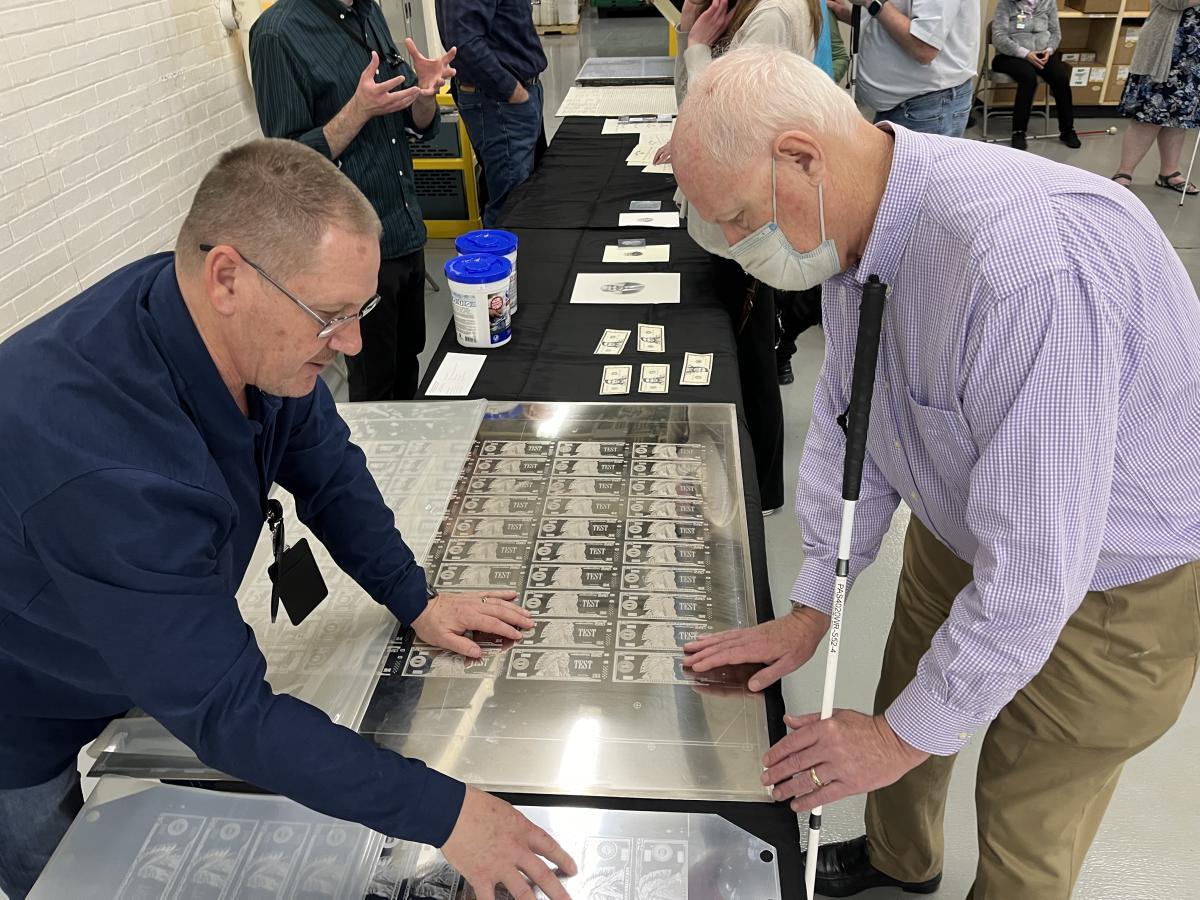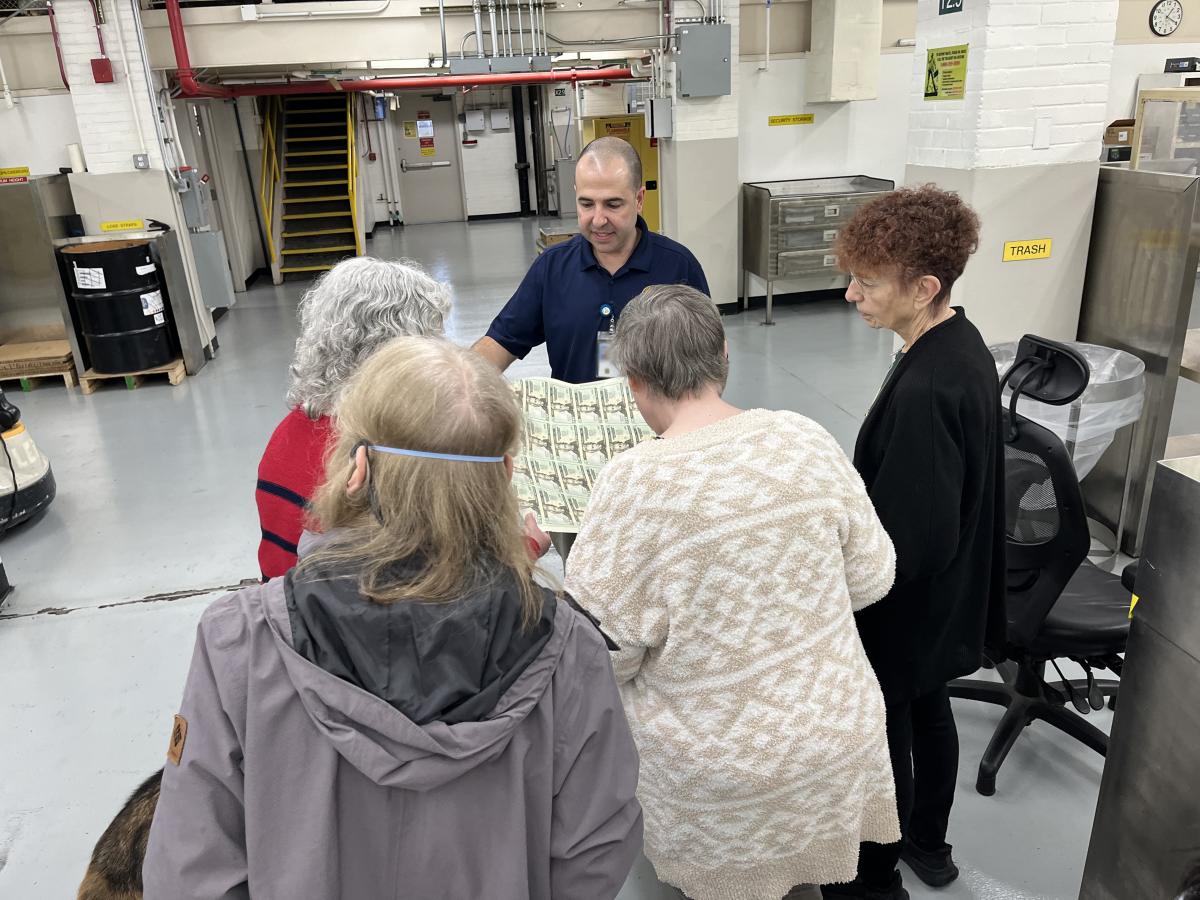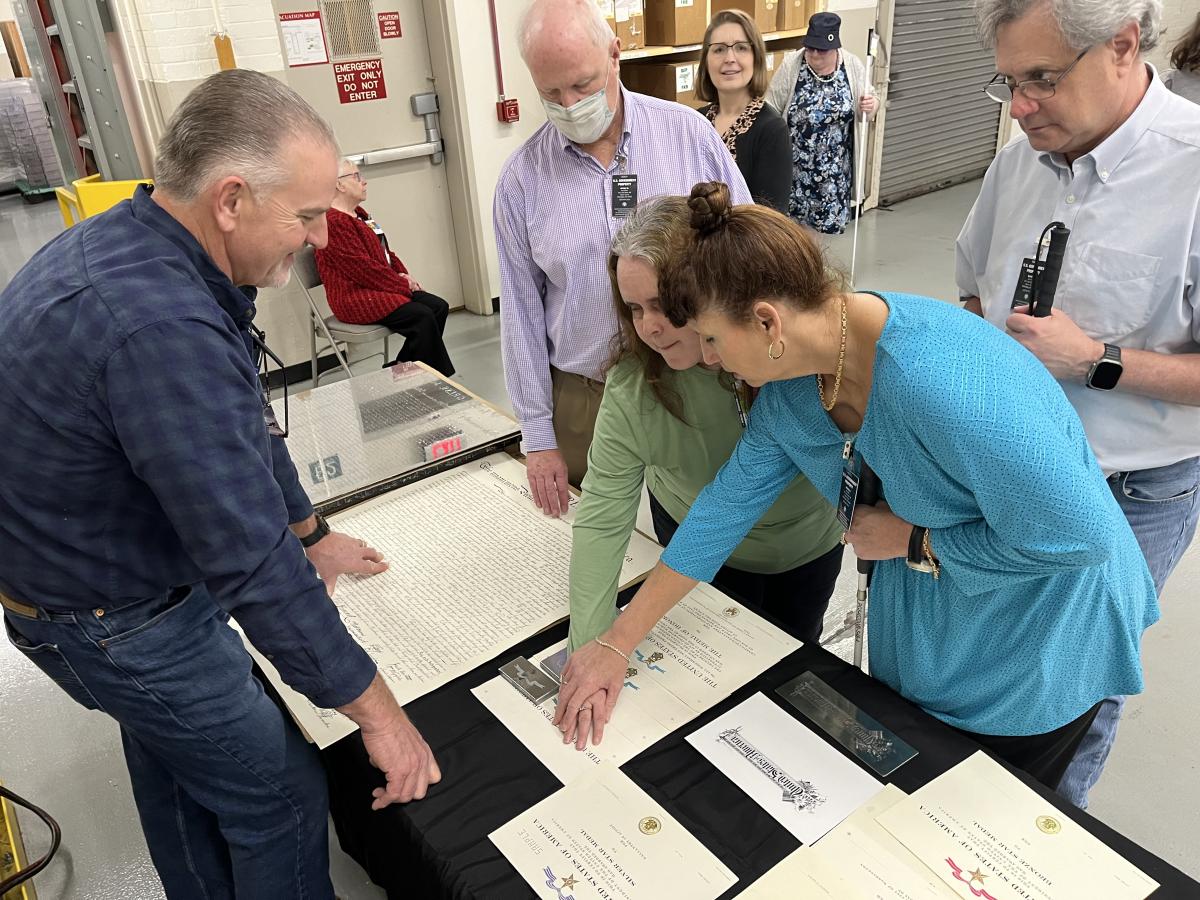By Tracy Garrett
The Bureau of Engraving and Printing’s (BEP) Washington, D.C. Facility (DCF) hosted an experiential visit for 29 members of the American Council of the Blind on March 1, 2024, including members of the board of directors and ACB staff and volunteers.
The special tactile currency production floor tour took place in the Large Examining and Printing Equipment (LEPE) section, where 50-subject sheets are processed.
LEPE Supervisor John Bernhard and Public Affairs Specialist Kevin Nance explained each step of the currency production process to the guests – some sighted and some with vision impairments or blindness – including jogging, full sheet examination, letterpress printing functions, product verification and the cutting and packaging of currency.
Various items representing every facet of prepress and currency production were on display for the guests.
Guests with vision impairments were able to feel prints and plates of engraved portraits and specialty products like the Declaration of Independence to experience the tactility of intaglio engraving.

Picture Engraver Joseph Wright explained the process of engraving portraits and vignettes, and Miscellaneous Plate Printer Peter David and Plate Printer Anthony Scicchitano II explained the die stamping process of progressive printing used to create specialty security products such as military medal certificates.
BEP’s mission is to develop and produce United States currency notes, trusted worldwide, and the meaningful access initiative remains a priority. A Raised Tactile Feature (RTF) to assist the blind and visually impaired community denominate Federal Reserve notes is planned to appear on the first redesigned denomination, the Catalyst $10.
Offset/Letterpress Assistant Supervisor Mark Agambar explained how the alto plate making process played a part in the printing of the RTF acuity coupons used during RTF development and similar to the focus group testing related to the upcoming currency redesign.
The guests were fascinated with the process that went into developing the RTF coupons.
“Countless ACB members who were able to touch the model accessible paper currency were almost speechless; the ability to touch paper currency and identify its denomination was unbelievably exciting,” said ACB Director of Advocacy and Governmental Affairs Claire Stanley. “The blind and low-vision community is anxiously waiting for the day when we can identify paper currency independently and is thankful for the work the Bureau is doing to make that a reality.”
Visitors were particularly excited about being able to handle individual currency sheets and hold cash-packs with a face value of about $12.8 million.

Administrative Assistant Kaitlyn Herrera confirmed Spoone’s assessment of the visit. “I wanted to reiterate how much our attendees enjoyed the tour,” she said. “It was all they could talk about!”
The BEP thanks all the stakeholders involved for making this educational and enlightening visit a success.
For more information about BEP’s Meaningful Access Initiative or to learn about obtaining a currency reader for qualified U.S. citizens, go to www.bep.gov/services/currency-accessibility.
